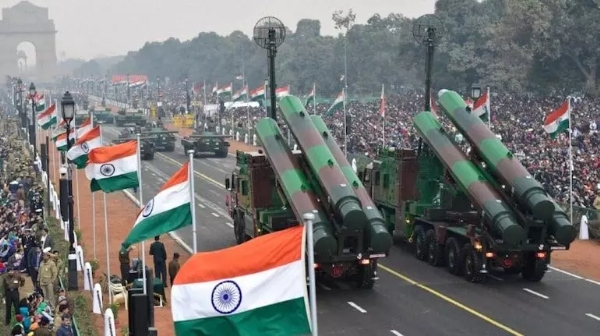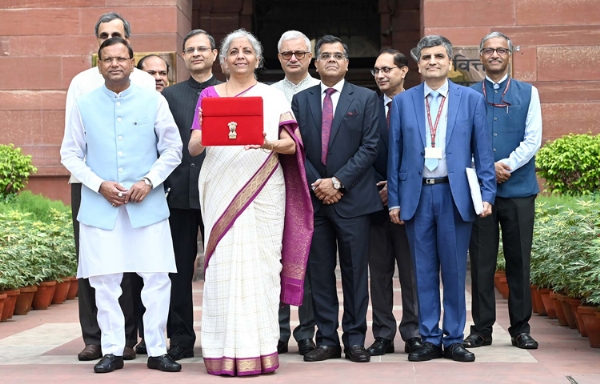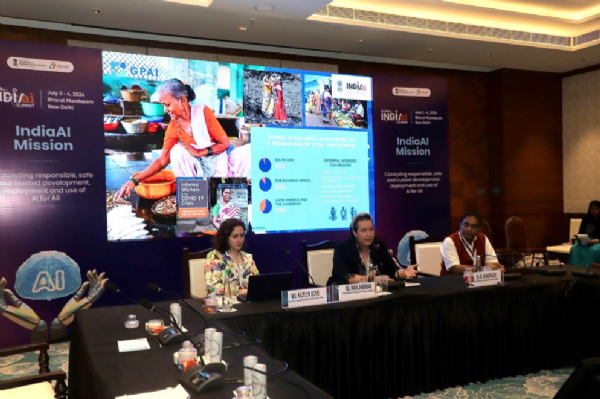Defence Ministry Boosts Budget to Enhance National Security


SPREAD MESSAGE OF INDIAN NATIONAL SECURITY TO AS MANY INDIANS AS POSSIBLE. LET US FREE INDIA OF CORRUPTION BY SPREADING THE MESSAGE TO AS MANY PEOPLE.MANY OF THE ARTICLES HAVE BEEN RECEIVED AS FORWARDED MAIL FROM VARIOUS FRIENDS . SHOULD SOME FACTS BE NOT CORRECT , YOU ARE REQUESTED TO PUT IT IN REMARKS BELOW THE ARTICLE. THIS WILL ENSURE A MORE BALANCED PERSPECTIVE OF THE SUBJECT DISCUSSED.
Defence Ministry Boosts Budget to Enhance National Security


1. A
thorough review of the national security system in its entirety should be
undertaken by an independent body of credible experts, whether a national
commission or one or more task forces or otherwise as expedient.
2. Having a
National Security Advisor who also happens to be Principal Secretary to PM can
only be an interim arrangement. There must be a full time NSA and a second line
of personnel should be inducted into the system urgently and groomed for higher
responsibilities.
3. There
must be periodic intelligence briefings of [the] Cabinet Committee on Security
with all supporting staff in attendance.
4. Every
effort must be made to ensure that a satellite imagery capability of world
standard is developed indigenously and put in place in the shortest possible
time.
5.
Acquisition of high-altitude Unmanned Aerial Vehicles (UAVs) should be
undertaken and institutionalized arrangements made to ensure that imagery
generated by them is disseminated to concerned intelligence agencies as quickly
as possible.
6.
Communication interception equipment needs to be modernized and
direction-finding equipment augmented.
7. The
establishment of a single organization like the National Security Agency of the
USA, grouping together all communication and electronic intelligence efforts,
needs to be examined.
8. Adequate
attention has not been paid to develop encryption and decryption skills.
9. The issue
of setting up an integrated Defence Intelligence Agency needs to be examined.
10. There is
no institutionalized mechanism for coordination or objective oriented
interaction between intelligence agencies and consumers at different levels.
Similarly, there is no mechanism for tasking the agencies, monitoring their
performance and reviewing their records to evaluate their quality. Nor is there
any oversight of the overall functioning of the agencies. Accordingly, a
thorough examination of the working of the intelligence system with a view to
removing these deficiencies is called for.
11. Though
the efficacy of the Joint Intelligence Committee has increased since it became
part of the National Security Council Secretariat, its role and place in the
national intelligence framework should be evaluated in the context of the
overall reform of the system.
12. The
development of country/region specialization along with associate language
skills should not be further delayed. It is necessary to establish think tanks,
[to] encourage country specialization and to organize regular exchange of
personnel between them and the intelligence community.
13. In order
to have a young and fit Army, colour service [service before a soldier is
required to retire or to go as a reservist] should be reduced from seventeen
years to between seven to ten years. Released officers and men should then be
diverted to paramilitary formations. Subsequently, older cadres might be
further streamed into regular police forces.
14. Improved
border management necessitates a detailed study in order to evolve appropriate
force structures and procedures to deal with the inflow of narcotics, illegal
migrants, terrorists and arms. 1
5. Many
experts have suggested the need to enhance India's defence outlay as budgetary
constraints have affected modernization and created operational voids.
Government must determine the level of defence spending in consultation with
the concerned Departments and Defence Services.
16. Armed
forces headquarters are outside the apex governmental structure. This had led
to many negative results and it is felt that the Services headquarters should
be located within the Government. The entire gamut of national security
management and apex decision making and the structure and interface between the
Ministry of Defence and Armed Forces’ headquarters should be comprehensively
studied and reorganized.
17.
Beginning with Indira Gandhi, successive Indian Prime Ministers have
consistently supported an Indian nuclear weapons programme but enveloped it in
the utmost secrecy not taking into confidence their own party colleagues, the
Armed Forces and senior civil servants. [Records in government files] establish
that the Indian nuclear weapons programme had a much wider consensus than is
generally believed. Accordingly, the publication of a white paper on the Indian
nuclear weapons programme is highly desirable.
18. On many
vital issues, sufficient public information is not available in a single
comprehensive official publication. The Government must review its information
policy and develop structures and processes to keep the public informed of
vital national issues.
19. One of
the major factors influencing Pakistan's aggressive behaviour in 1947, 1965,
1971 and 1999 has been a deliberately cultivated perception of an ineffectual
Indian Army and a weak and vacillating Indian Government. Though Pakistan was
discomfited in all the four military adventures it undertook, it has attempted
to portray each as a narrowly missed victory. It is, therefore, necessary to
publish authentic accounts of the 1965 and 1971 wars to establish the facts. It
is also recommended that an authoritative account of the Kargil conflict be
published at an early date.
20. A true
partnership must be established between the Services and the DRDO [Defence
Research and Development Organization] to ensure that the latter gets full
backing and funding from the Services and the former get the indented equipment
they require without delay.
21.
Establishment of a civil–military liaison mechanism at various levels from
Command Headquarters to operative formations at the ground level is essential
to smoothen the relationship during times of stress and to prevent friction and
alienation of the local population.
22. A
rehabilitation programme for soldiers who were wounded in the Kargil war and
[for] others must be put in place.
23. The
dedication and valour of Ladakh Scouts and J&K Light Infantry merit
recognition through raising of additional units of these regiments locally.
24. The
country must not fall into the trap of Siachenization of the Kargil heights and
similar unheld gaps. The proper response would be a declaratory policy that
deliberate infringement of the sanctity of the LOC and crossborder terrorism
will meet with retaliation in a manner, time and place of India's choosing.
25. Credible
measures must be undertaken in J&K to win back alienated sections of the
population and attend to genuine discontent.
26. Neither
the Northern Army Command nor HQ 15 Corps nor the lower field formations had
media cells, which could cater to the requirement of the press corps. It must
also be recognized that the media has to be serviced at many levels – national,
local and international.
27. The US
Armed Forces usually operate dedicated radio and TV channels to entertain and
inform their armed forces when deployed overseas. The Government should
seriously consider similar dedicated facilities for the Indian Armed Forces. If
such facilities had been available at the time of Kargil, some of the
misleading reports and rumours that gained currency could have been effectively
countered.
28. The
committee was informed that Prasar Bharati [India's public sector broadcasting
organization] in J&K lacks Balti and other linguistic skills to reach the
people across the LOC. Unless such software and programming aspects are taken
care of, mere hardware expansion may not be cost effective.
Excitement over Usha Chilukuri


